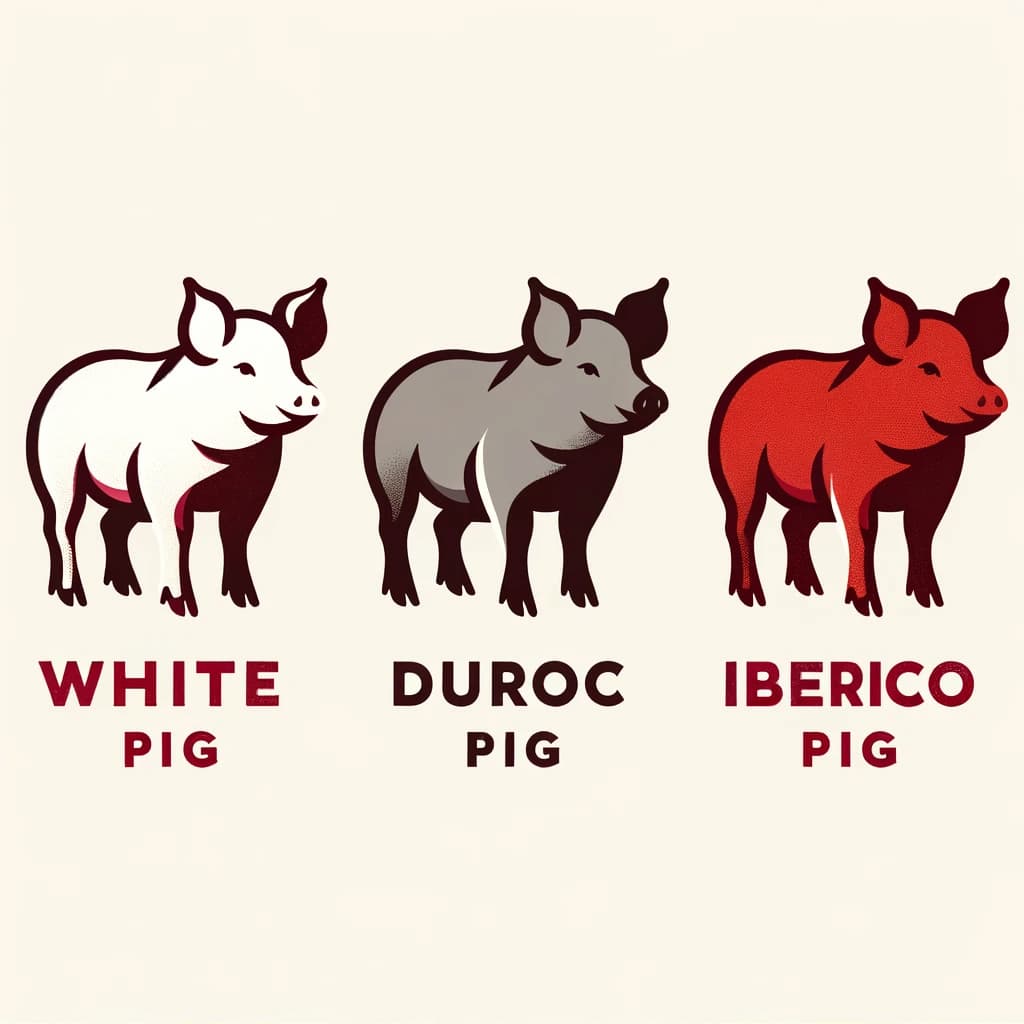Today we immerse ourselves in the exquisite world of two of Spain’s culinary treasures: Serrano ham and Iberian ham. As experts in the distribution of hams, we are going to break down the differences that make these products unique.
Iberian Ham Comes from Iberian Pig
The internationally acclaimed Iberian ham is obtained exclusively from the Iberian pig breed. This native breed is distinguished by its ability to store fat infiltrated into the muscle, which gives its meat an exceptional texture and flavor. Iberian pigs are raised in pastures, a unique ecosystem where they feed on acorns during the montanera, the period in which they fatten freely in the countryside. This diet is key to the flavor profile of Iberian ham, providing sweet notes and a marble texture that melts in the mouth.
Serrano Ham Comes from White Pig
In contrast, serrano ham is made from white pig, a more general and versatile breed. These pigs are raised on farms and their diet is feed-based, resulting in leaner meat with a less intense flavor. Although it is less exclusive than Iberian ham, serrano ham is highly appreciated for its characteristic flavor and accessibility.
Difference According to Your Healing Process
The curing process is fundamental in the quality of both types of ham. Iberian ham, due to its high fat content, requires a longer curing process, between 24 and 36 months, and in some exceptional cases, up to 48 months. This long process allows the ham to develop a complexity of flavors and a unique texture. On the other hand, Serrano ham has a shorter curing process, generally 7 to 16 months, resulting in a firmer texture and a flavor more focused on salinity.
Difference between Serrano and Iberian Ham According to Flavor
Iberian ham offers an explosion of flavors: from sweet to nutty, depending on the pig’s diet and the curing process. The Iberian fat, rich in monounsaturated fatty acids, contributes to a soft and silky texture. On the other hand, serrano ham stands out for its more direct and salty flavor, with a less fatty and more compact texture. Both offer different, but equally pleasant, taste experiences.
Gran Reserva Serrano Ham
Within the Serrano ham category, Gran Reserva represents the pinnacle of quality. This is selected for its exceptional texture and flavor, and undergoes a longer than standard curing process, often exceeding 15 months. The Gran Reserva offers a perfect balance between firmness and softness, with a more developed flavor and a texture that is close to that of Iberian ham.
Conclusion: Two Jewels of Spanish Gastronomy
In conclusion, Serrano ham and Iberian ham are two pillars of Spanish culinary culture. While Iberian ham is a luxury product, with an incomparable flavor and texture, Serrano ham offers a delicious, more accessible alternative. Both reflect the richness and diversity of Spanish gastronomy and are a testament to the art and tradition of curing ham.
At MalagaGourmet, we celebrate these differences and invite you to explore and enjoy both types of ham, each with its unique character and charm.





0 Comments